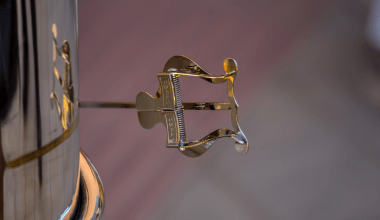Violin sheet music is like a roadmap for playing the violin. It tells you exactly what notes to play, how fast to play them, and even how loudly or softly to play. Think of it as a recipe for beautiful music!
This music is written using special symbols on lines called a staff. Each symbol tells you what note to play and how long to hold it. You’ll see:
- Notes: These are the sounds you play.
- Treble Clef: This tells you the violin’s notes are high-pitched.
- Bow Movements: Instructions like “up” or “down” bow show how to use your bow.
- Dynamics: Markings like “p” (soft) or “f” (loud) make the music expressive.
Once you learn to read violin sheet music, it’s like unlocking a whole new world of music!
Why is Violin Sheet Music Important?
Violin sheet music helps you play songs accurately. Instead of guessing or playing by ear, you can rely on the sheet music to guide you. This makes your practice more effective.
Here’s why violinists love sheet music:
- Learn Faster: With sheet music, you know exactly what to practice.
- Play Any Song: Once you can read music, you can play anything, from pop songs to classical masterpieces.
- Team Play: Sheet music helps you play with others in an orchestra or band.
- Improve Technique: You’ll develop skills like bow control and finger placement.
How to Start Reading Violin Sheet Music
If you’re new to reading music, don’t worry—it’s easier than it looks! Start small, and soon you’ll be reading music like a pro.
Step 1: Learn the Notes
The violin plays high notes, and these are written on the treble clef. Begin by learning where the notes are on the lines and spaces of the staff.
- Lines: E, G, B, D, F (Remember: Every Good Boy Deserves Fun)
- Spaces: F, A, C, E (It spells “FACE”!)
Step 2: Practice Simple Songs
Start with easy pieces like “Mary Had a Little Lamb” or “Twinkle, Twinkle, Little Star.” These use simple rhythms and notes.
Step 3: Use a Fingering Chart
A fingering chart shows where to place your fingers on the violin strings. This helps you play the correct notes.
Easy Songs for Beginners
Starting with simple songs can make learning violin sheet music fun. Try these:
- “Hot Cross Buns”: Only uses three notes.
- “Ode to Joy”: A joyful tune by Beethoven.
- “Lightly Row”: A gentle melody perfect for practice.
Each song will help you get comfortable with reading notes and using your bow.
How to Practice with Violin Sheet Music
Practicing violin sheet music regularly will improve your skills over time. Here’s how to make the most of your practice sessions:
- Go Slow: Start by playing each note slowly and correctly. Speed comes later!
- Repeat Sections: Play small parts of the music until you get them right.
- Use a Metronome: A metronome helps you stay on beat.
- Record Yourself: Listen to how you sound to find areas for improvement.
- Relax: Keep your shoulders relaxed and your fingers light. This helps you play smoothly.
Advanced Violin Sheet Music Techniques
Once you’ve mastered the basics, you can explore advanced techniques to make your playing more expressive. These include:
- Vibrato: Adding a slight shake to your notes to make them more emotional.
- Pizzicato: Plucking the strings with your fingers for a unique sound.
- Harmonics: Lightly touching the strings to create high, flute-like tones.
- Double Stops: Playing two notes at the same time.
Where to Find Violin Sheet Music
You don’t have to spend a lot to get great violin sheet music. Here are some easy ways to find it:
- Online Websites: Websites like IMSLP and 8notes have free music for all levels.
- Local Music Stores: Visit your nearest store to find printed sheet music.
- Music Apps: Apps like MuseScore let you download and play along with digital sheet music.
- Teachers: Your violin teacher can recommend music that matches your skill level.
Famous Violin Sheet Music You Should Try
Some violin pieces are so famous that every violinist dreams of playing them. Here are a few to add to your list:
- “Canon in D” by Pachelbel: A timeless classic.
- “The Four Seasons” by Vivaldi: Evocative of nature.
- “Meditation” by Massenet: Perfect for emotional expression.
- “Csárdás” by Monti: A fun and energetic piece.
These pieces will challenge you while showcasing the violin’s beauty.
Fun Facts About Violin Sheet Music
- Oldest Music: The earliest sheet music dates back to the Middle Ages.
- Famous Composers: Mozart started writing music at the age of five!
- Handwritten Masterpieces: Before printers, all music was copied by hand.
Knowing these tidbits can make your journey with violin sheet music even more exciting.
Make Learning Fun with Violin Sheet Music
Learning violin sheet music isn’t just about hard work—it can also be fun! Here’s how to enjoy the process:
- Play Songs You Love: Whether it’s a Disney tune or a pop hit, playing your favorite music makes practice enjoyable.
- Join a Group: Playing with others keeps you motivated and improves timing.
- Reward Yourself: Celebrate small wins, like mastering a tricky section.
Conclusion
Violin sheet music is your guide to creating beautiful music. It’s not just about notes on a page—it’s about bringing melodies to life. Whether you’re a beginner or an advanced player, keep practicing, exploring, and enjoying your journey with the violin.
Remember, every great violinist started with the basics. Stick with it, and soon you’ll be playing your favorite pieces with confidence and joy!
Related Articles:
For further reading, explore these related articles:
For additional resources on music marketing and distribution, visit DMT RECORDS PRIVATE LIMITED.






